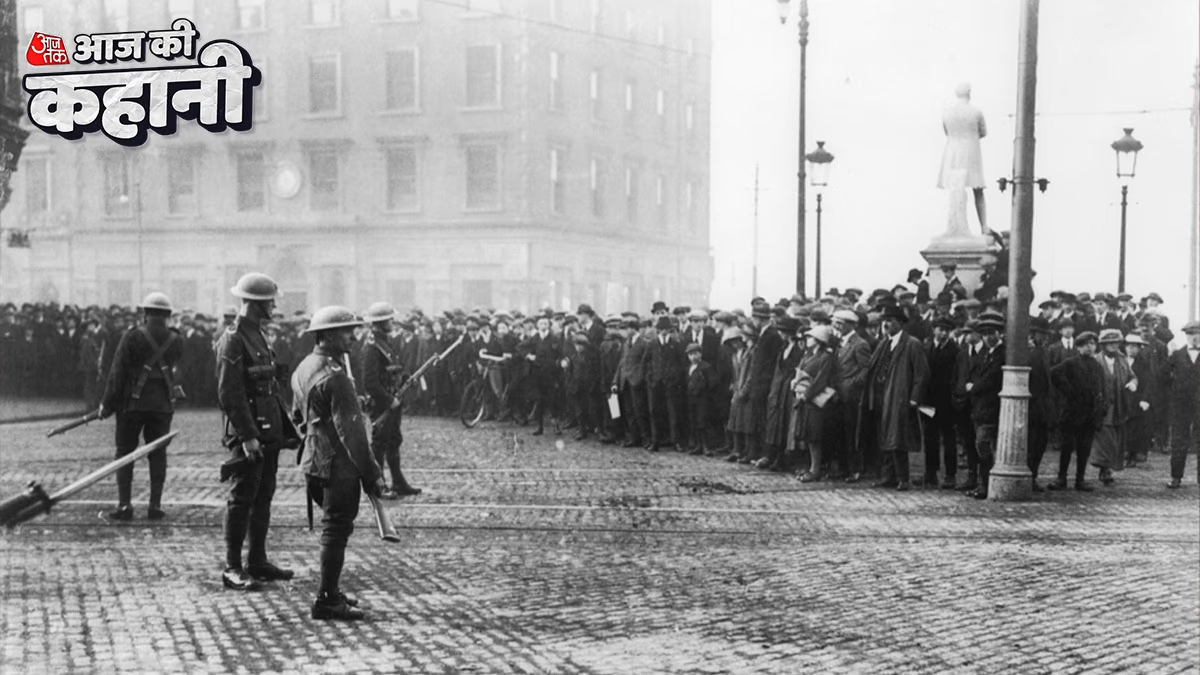On December 6, 1921, the Irish Free State was declared, concluding five years of struggle for independence from Britain. Like other autonomous nations of the former British Empire, Ireland was to remain part of the British Commonwealth, symbolically under the king's domain. Later, the Irish Free State severed relations with Britain, renamed itself Éire, and is now known as the Republic of Ireland.
The English rule over the island of Ireland began in the 12th century. In the 16th century, Queen Elizabeth of England encouraged massive migration of Scottish Protestants here. Throughout the coming centuries, a series of rebellions by the Irish Catholics were suppressed while an Anglo-Irish minority maintained dominance over the Catholic majority.
Famine Claimed a Million Lives
The Irish population under landlords relied solely on a diet of potatoes, and when a potato famine struck in the 1840s, one million people died of starvation. Approximately two million fled to the United States. By the late 19th century, the movement for Irish self-governance gained momentum, leading to the Irish nationalists' Easter Rising against British rule in Dublin in 1916.
The 1916 Rebellion Ignites
Although this uprising was also crushed, the movement for independence persisted. In 1919, the Irish Republican Army (IRA) launched a widespread and effective guerrilla campaign against the British forces. In 1921, a ceasefire was announced, and in January 1922, a faction of Irish nationalists signed a peace treaty with Britain.
It called for the partition of Ireland, with the south becoming autonomous while the island's six northern counties remained within the United Kingdom. Civil war had already broken out before the declaration of the Irish Free State on December 6, 1922, ending with the victory of Irish Free State forces over the Irish Republican forces in 1923.
Ireland Remained Neutral during WWII
The constitution adopted by the Irish people in 1937 declared Ireland as a sovereign, independent, and democratic state, renaming the Irish Free State as Éire. Ireland remained neutral during World War II, and in 1949, the Republic of Ireland Act severed the final remaining link with the Commonwealth.
Also Read: November 20: When Gunmen Captured Mecca's Grand Mosque, Shocking the World
Ongoing Conflict in Northern Ireland
However, the struggle continued in Northern Ireland, with the IRA, declared illegal in the south, going underground in an attempt to reclaim the British-governed northern counties. Violence between Protestants and Catholics in Northern Ireland escalated in the early 1970s, and to date, this conflict has claimed more than 3,000 lives.
Also Read: How Israel was Formed: The UN Vote to Partition Palestine
Major Events
On December 6, 1992, the Babri Masjid in Ayodhya was demolished.
December 6, 1956 marks the death of Dr. Bhimrao Ambedkar, the architect of the Indian Constitution.
December 6, 1917 - Finland declared independence from Russia.
December 6, 1534 – Spanish traveler Sebastian Cabot discovered Argentina's Paraná River.




